Photo by Brian Prose
Ohio Hanging Rock Preserve
5-acre expansion & a 2nd trailhead project
Hiking: Sunrise to sunset
Address: Frederick Rd. Wheelersburg, Ohio 45694
Download and Go! - Hiking Guide and More Information
A dog owner's guide to hiking the Arc of Appalachia
2nd Trailhead Project Cost: $73,891
Current balance yet to raise: $0
THIS CAMPAIGN IS COMPLETE!
Ohio Hanging Rock is a 750-acre preserve with a completed hiking trail open to the public. The preserve lies in the remote hill country of the Little Scioto Watershed in northeastern Scioto County - deep in Ohio’s Appalachia where forest cover remains relatively high and lands largely undeveloped. Eight miles of waterways dissect the preserve, carving into relief twisting ridge lines and a large number of isolated hilltop knobs. Consequently, Ohio Hanging Rock is exceptionally rich in fern diversity. The preserve’s many sheltered glens boast handsome spring wildflower displays. Hanging Rock is renowned for its immense sandstone outcrops. Covered with mosses, ferns, and lichens, the massive boulders follow an elevation line just below the ridgetops. For more preserve information, scroll below the photo gallery.
Expanding the Ohio Hanging Rock. The Arc of Appalachia has completed it campaign to purchase a five-acre inholding on Frederick Creek, a waterway that dissects the preserve. Significant funding has been awarded by Clean Ohio for land acquisition and the development of a second trail that will be both beautiful and of historical interest. The trail will lead to old clay mine entrances, the site of the old tipple, and charcoal pits. The map below shows the new acquisition in red and the current preserve in gray.
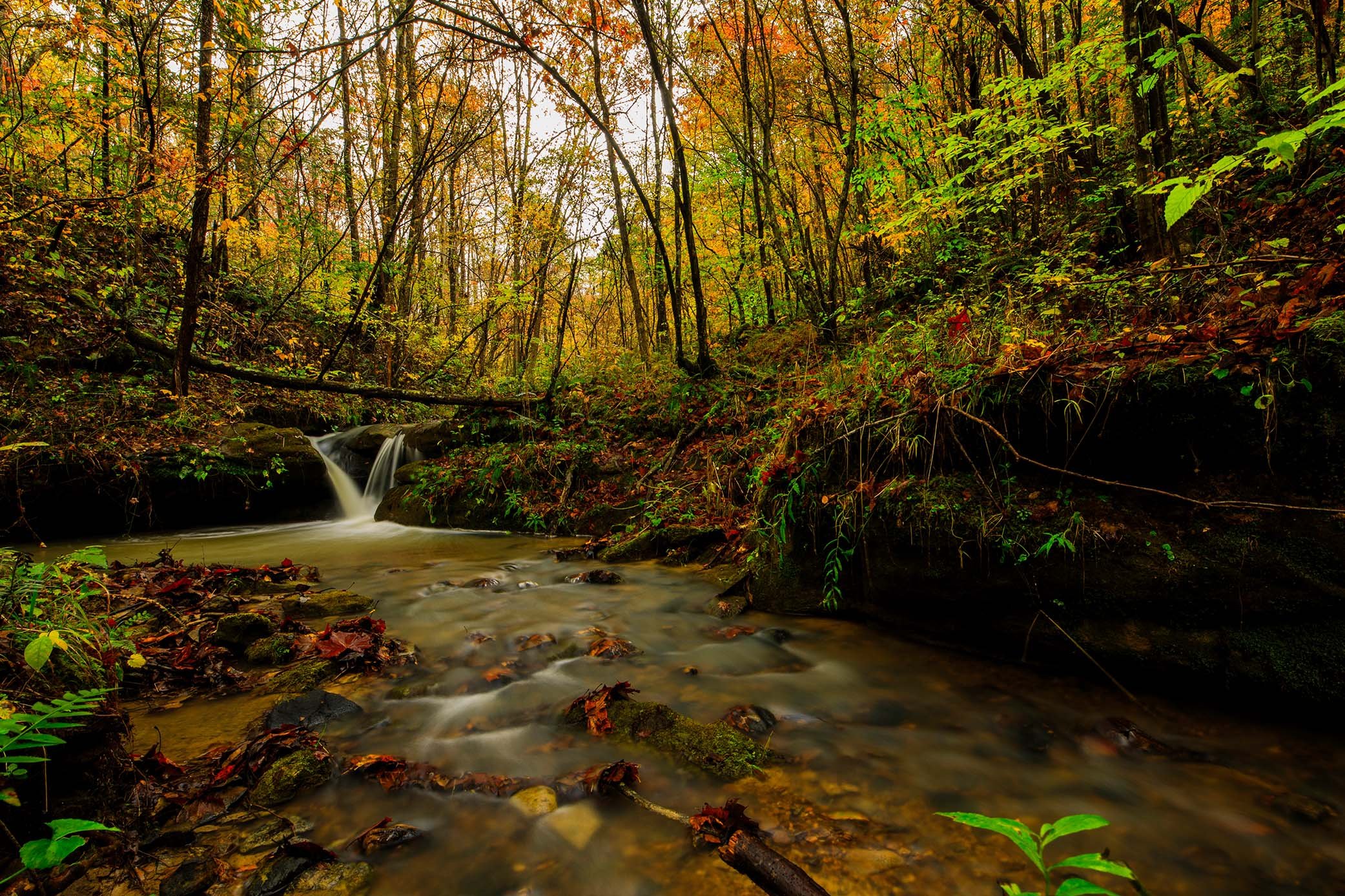
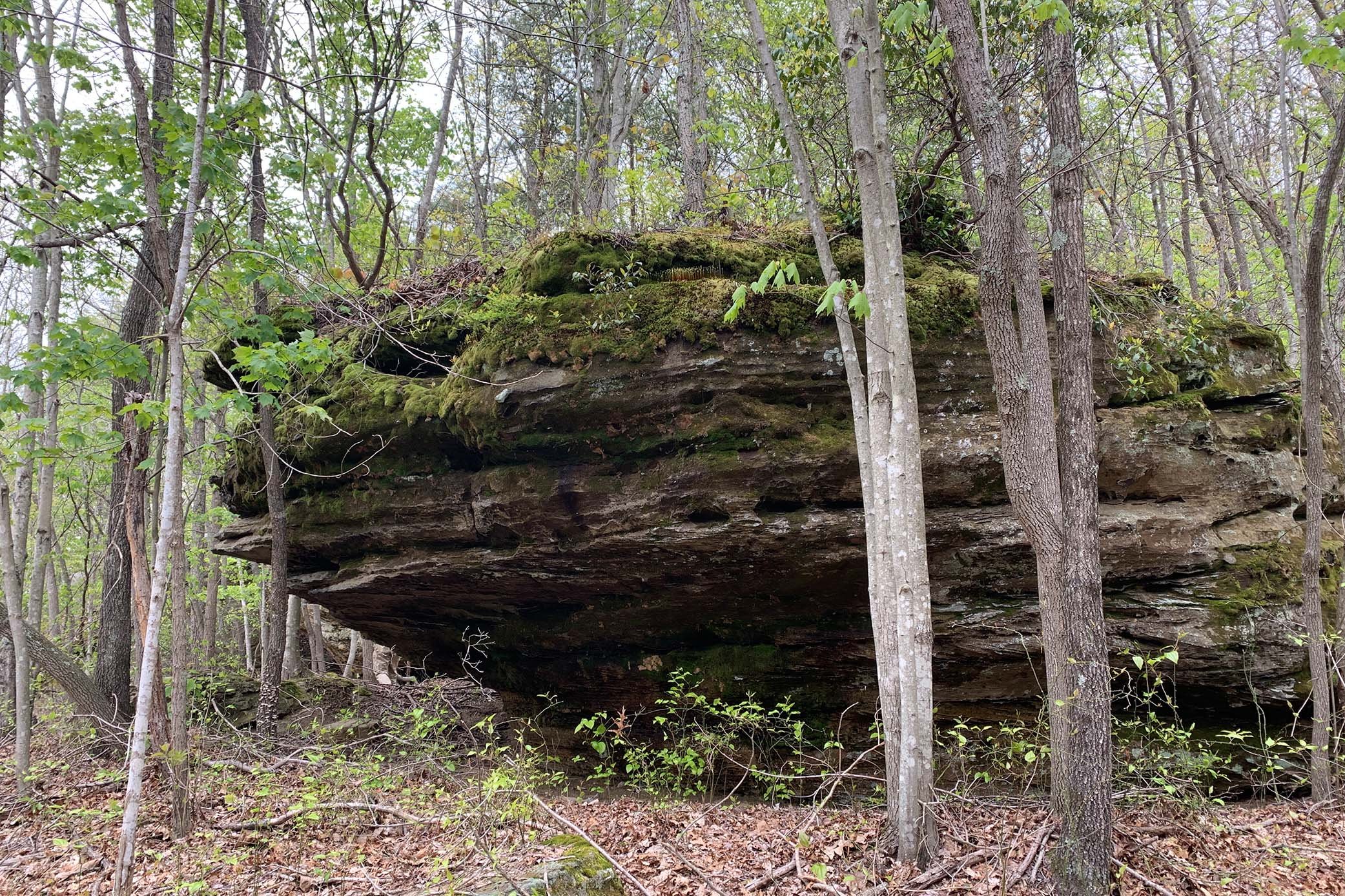
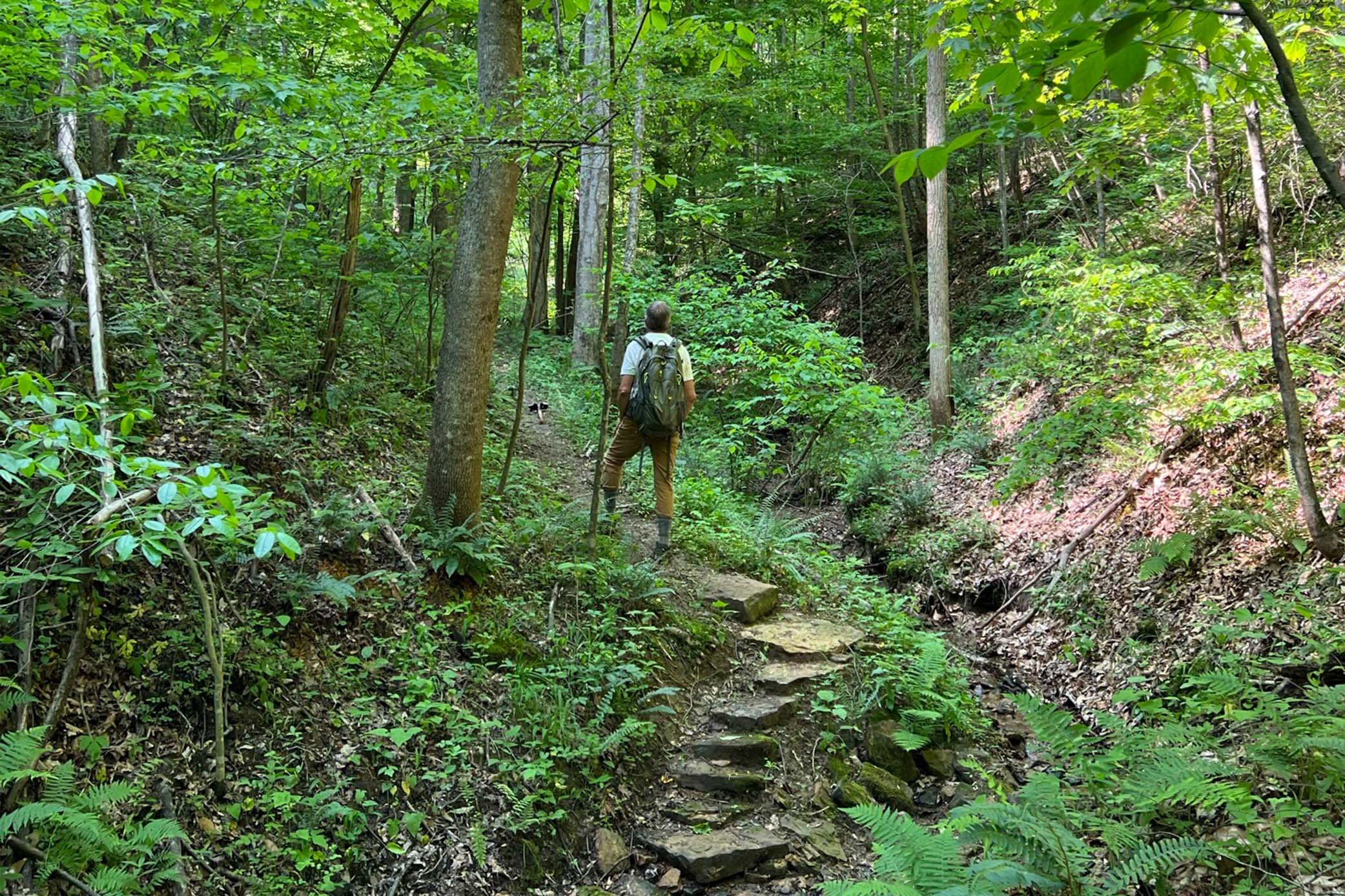
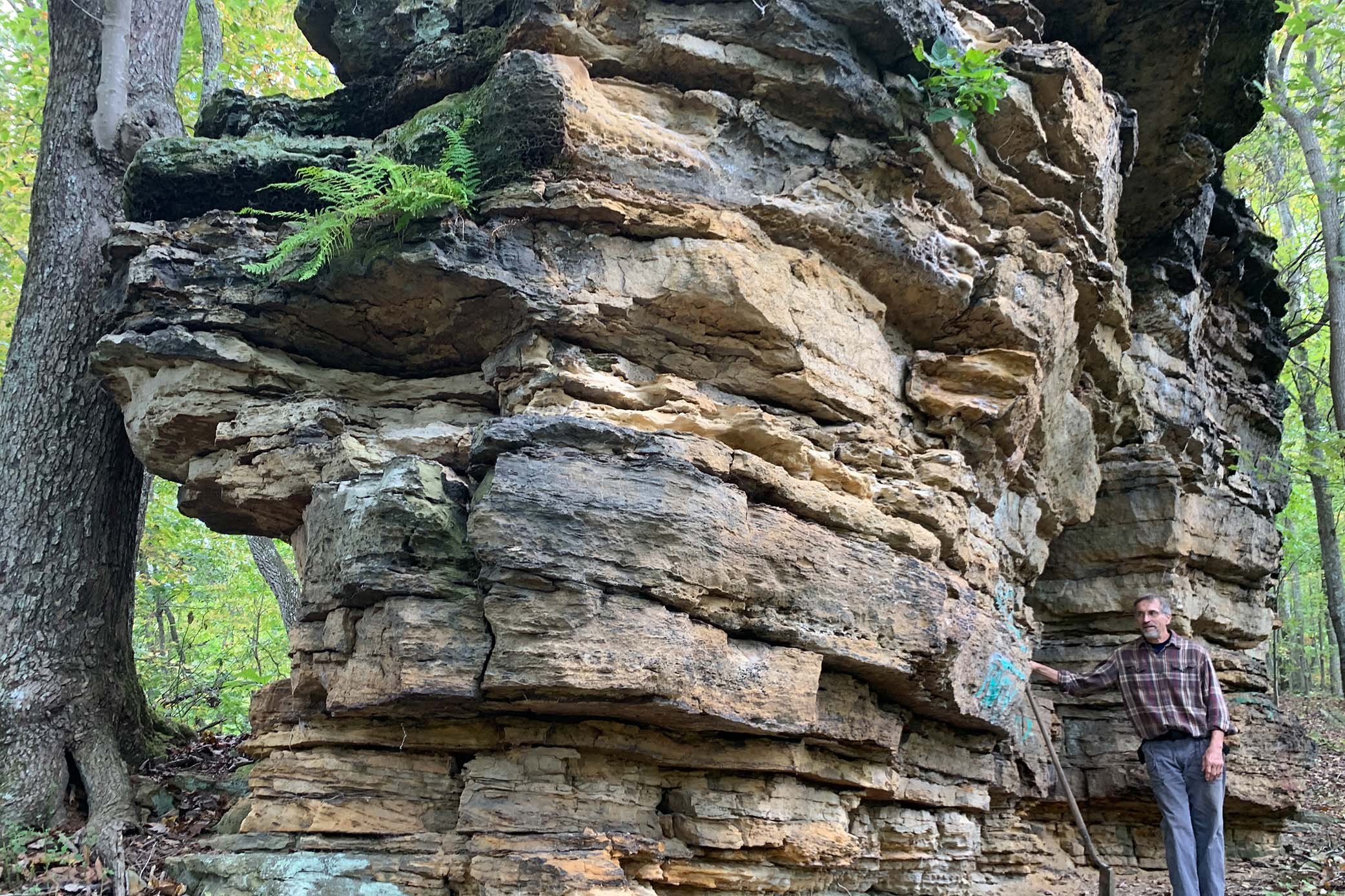
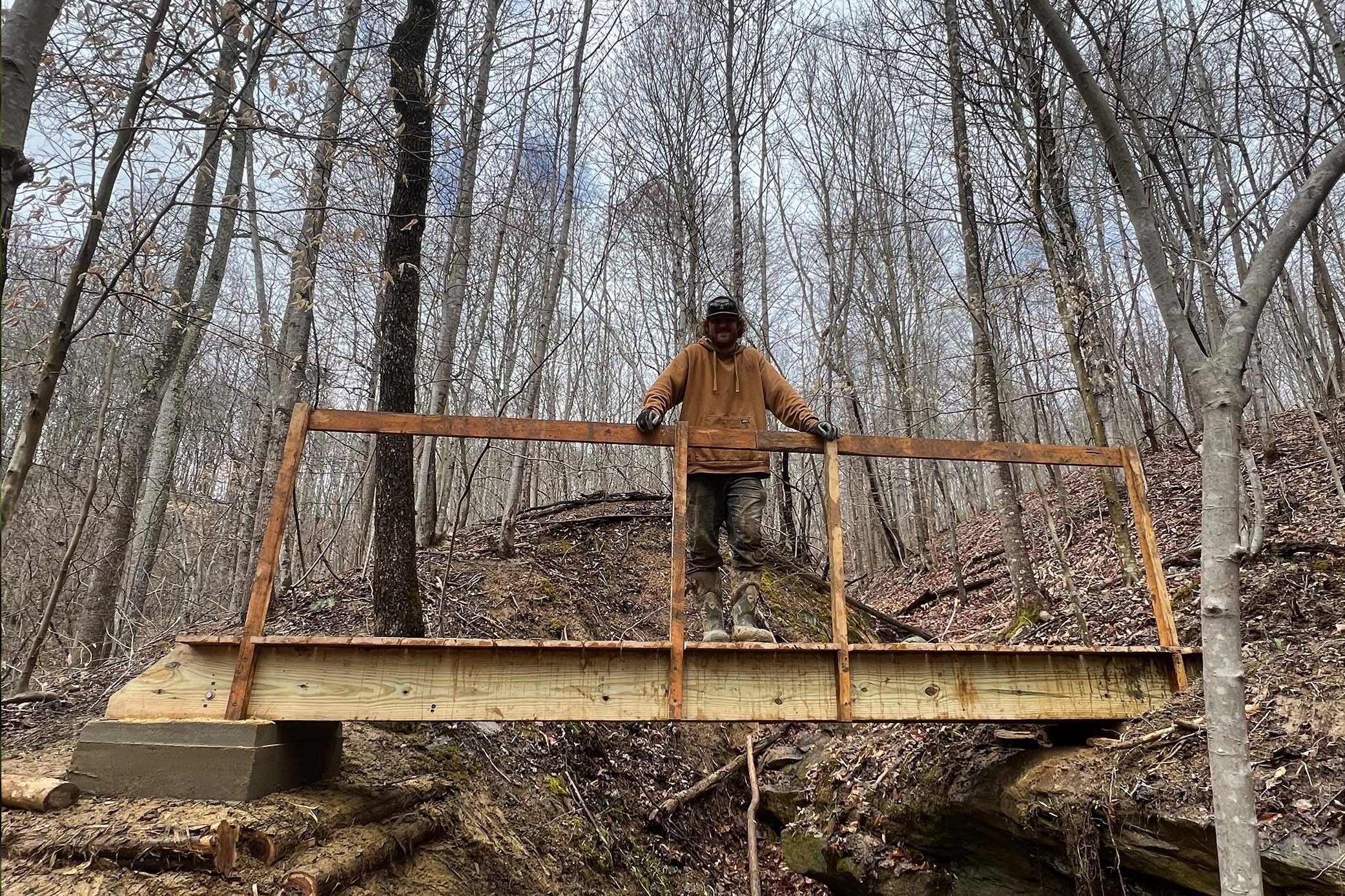
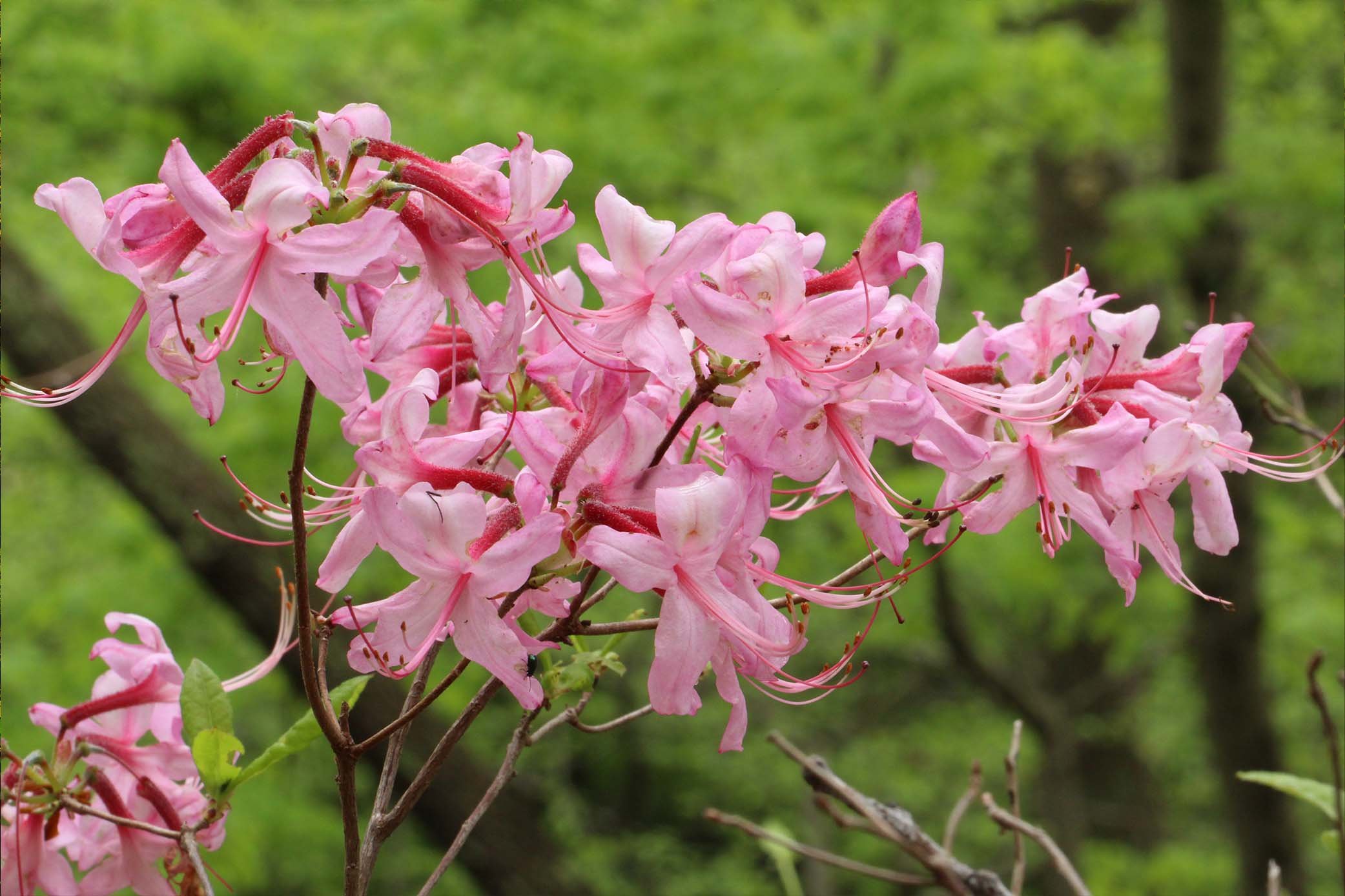

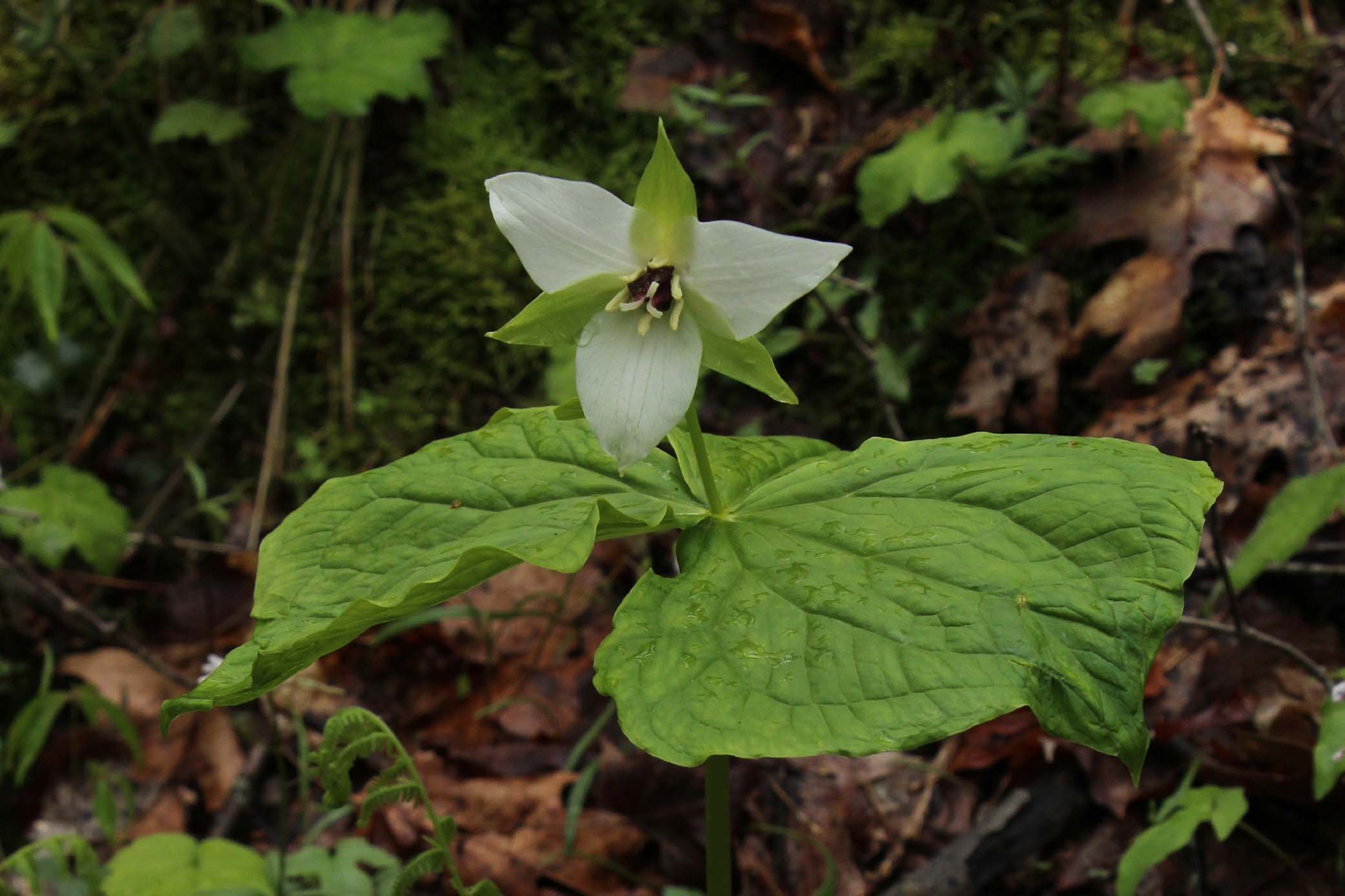
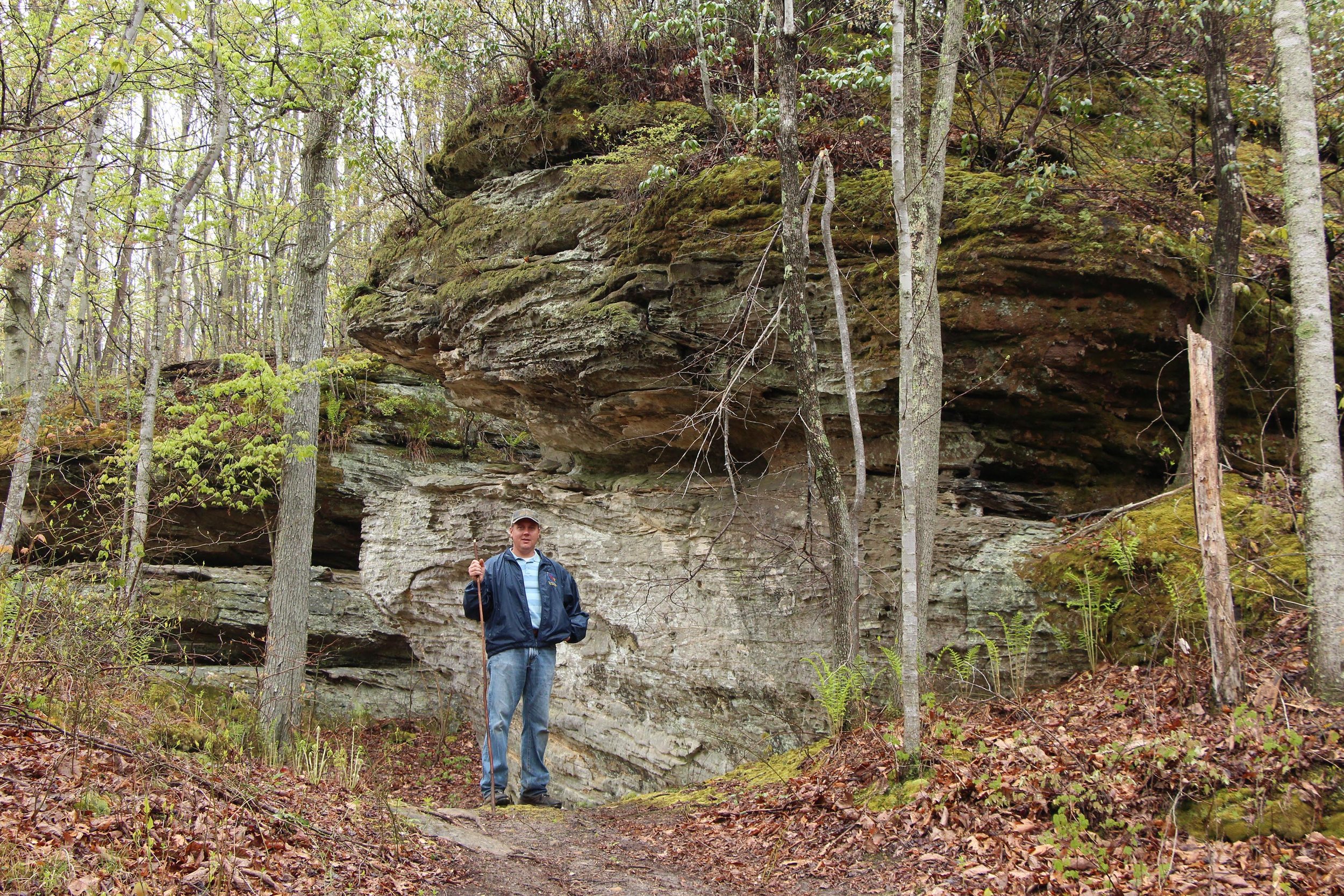
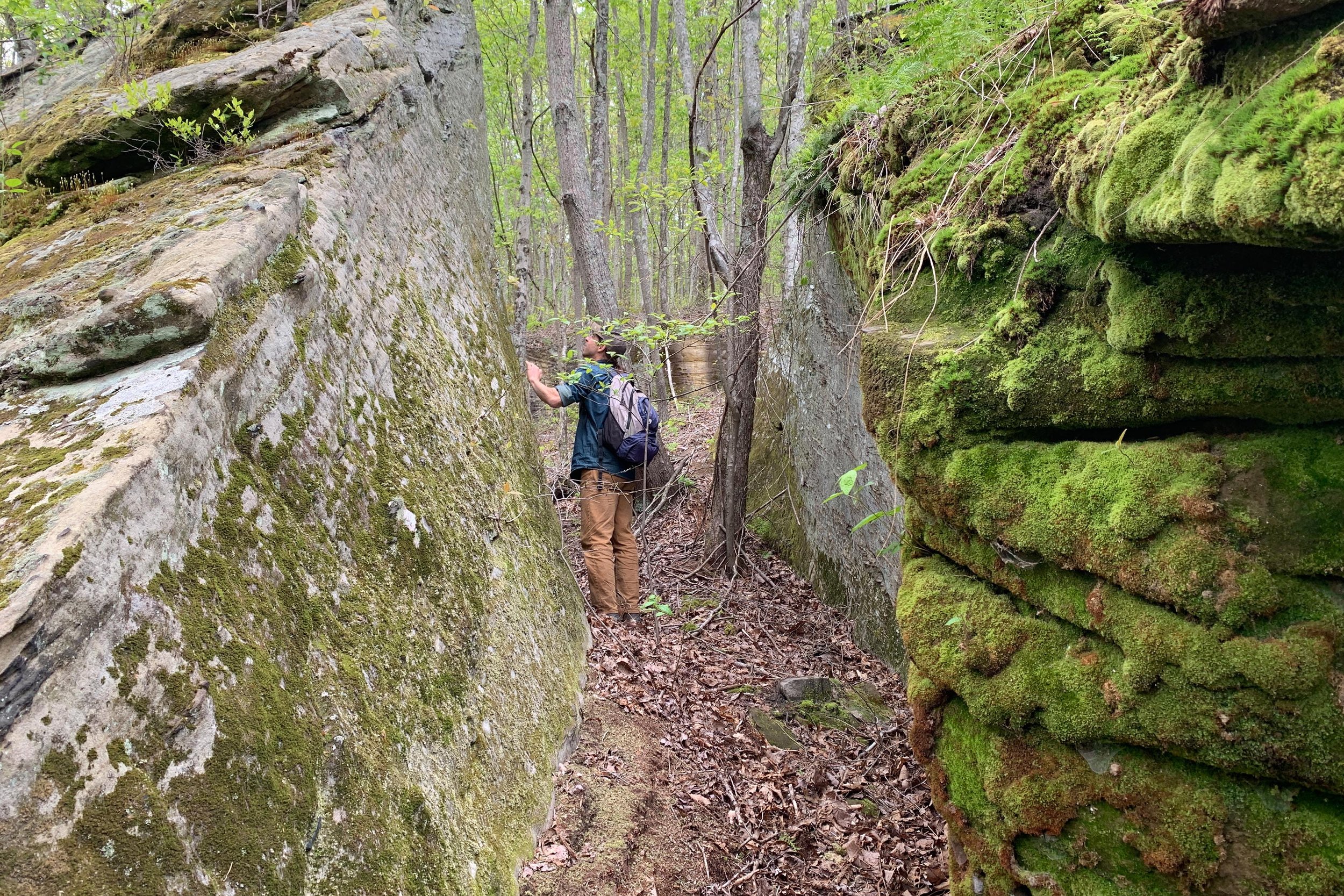
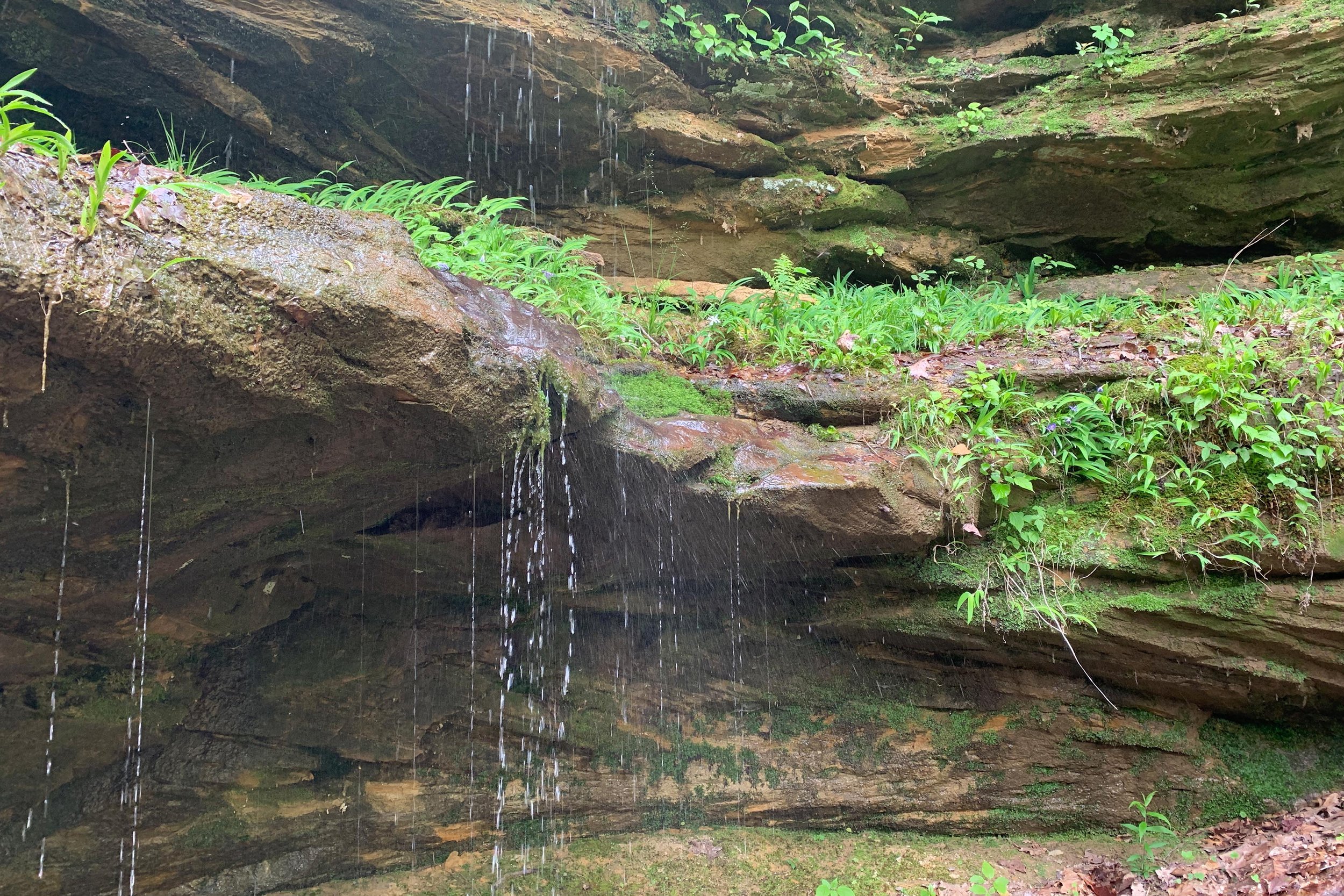
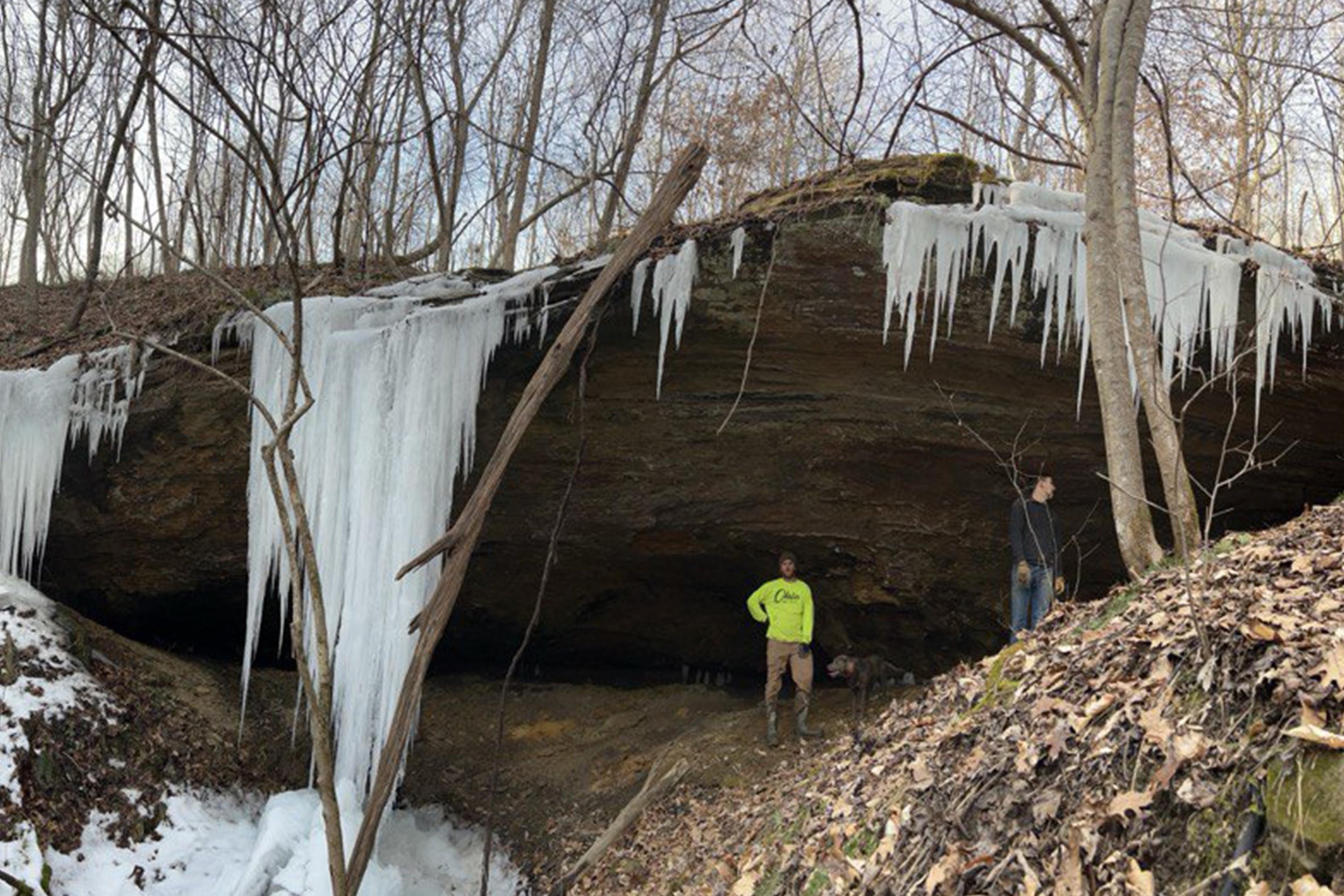
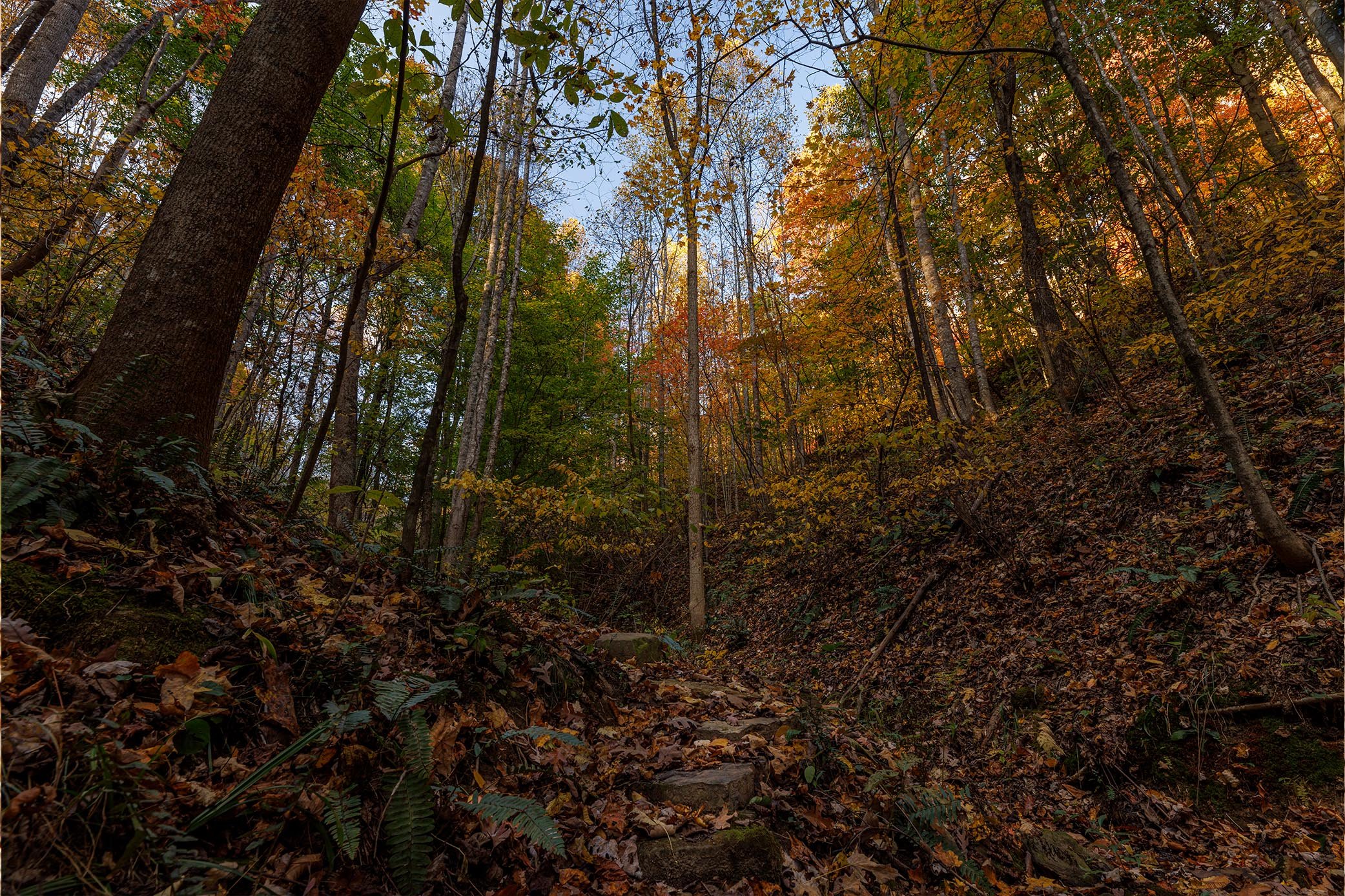
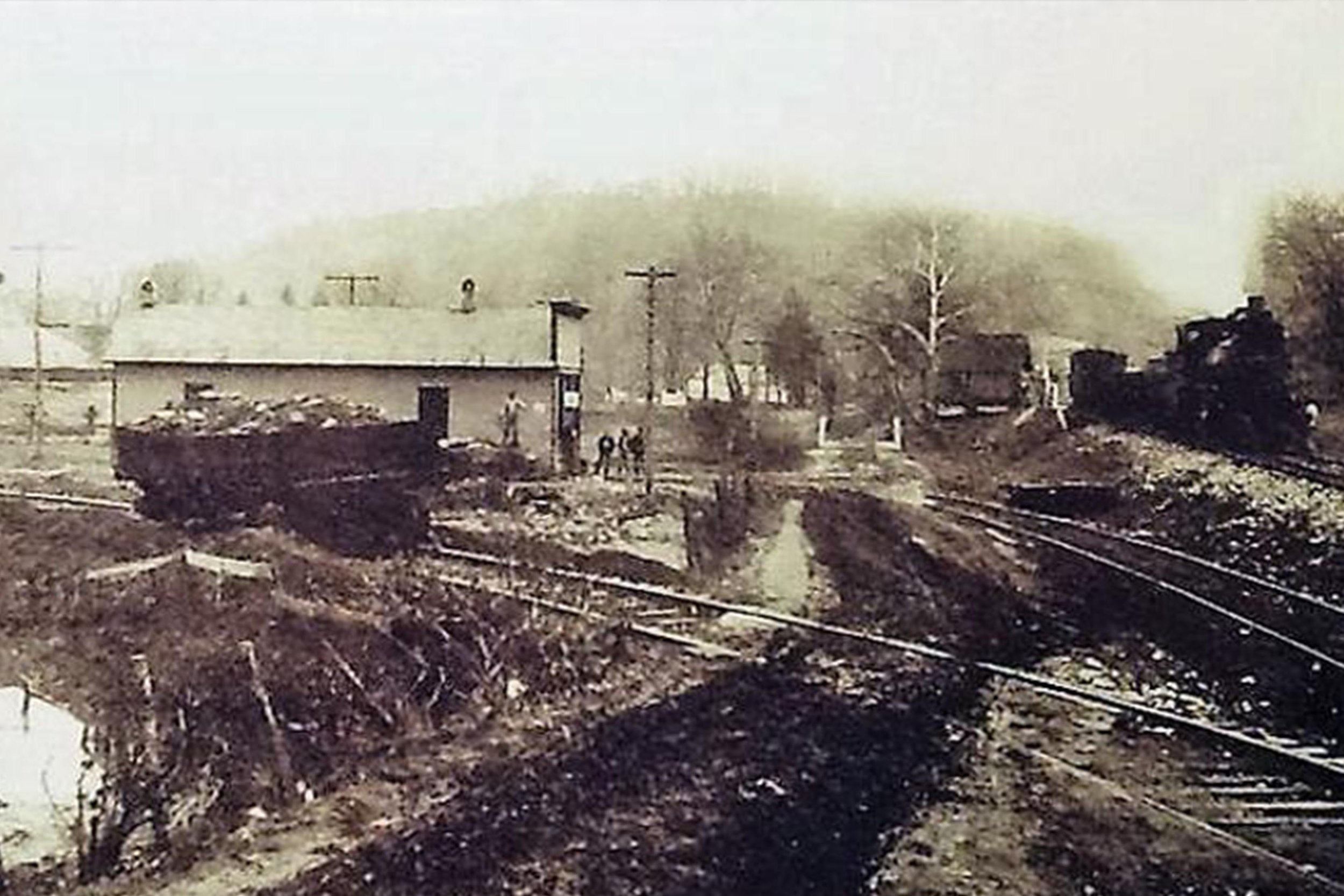


High Species Diversity. The young forest is recovering well from previous harvests and boasts a classic Appalachian assemblage of oaks (chestnut, white, black, red), hickories (pignut and shagbark), and red maple, interspersed with a diverse assortment of blackgum, sourwood, sugar maple, yellow buckeye, and yellow poplar. The fern abundance and diversity in the preserve are splendid. Notable botanicals include butternut trees, northern roseshell azalea, pinkster flower, pink lady slipper, and cornel-leaved aster. Four state-listed species include feather-bell, Strenantheium gramineum; yellow crown-beard, Verbesina occidentalis; southern red oak, Quercus falcata; and small-flowered alum-root, Heuchera parviflora.
The Great Teays River. The “high-and-dry” massive boulders near Ohio Hanging Rock’s ridgetops were, in an earlier era, the wave-washed shorelines of islands dotting the vast glacial lake known as Lake Tight. Over the last two million years, our climate has been punctuated by waves of severe cold and dramatic glacial advances. Prior to this Pleistocene Era, a majestic river known as the Teays River wound northward from the core of the Appalachian Mountains. Traveling north, the mighty river flowed through southern Ohio, not far from today’s Ohio Hanging Rock Preserve. When glaciers to the north blocked the great Teays from flowing in its traditional channel , a lake nearly as large as Lake Erie formed, which existed for the next 6,000 years. When its waters eventually breached its boundaries, the Teays drained to the south, becoming the Ohio River. It is remarkable to think that the high-elevation rock formations witnessed by hikers along the trail were once the wave-kissed shoreline of a mighty sea. What a sight that must have been to stand at the shore of Lake Tight and see its surface dotted with forest-capped islands that are now our hill-country’s ridgetops.
Clay! The clay that built up as sediment on the floor of Lake Tight, known today as Minford Clay, still lies in beds in the preserve’s lower elevations. The presence of so much clay slows drainage, creating seasonal wetlands. In the spring, the region’s coves and riparian corridors resound with the calls of spring peepers, wood frogs, eastern gray tree frogs, and leopard frogs.
Not always wilderness. The preserve is part of a larger Hanging Rock region that was once the nation’s leading producer of iron, charcoal, and clay bricks. Clay was mined for brick-making, while the trees were felled to create charcoal for the furnaces. Until the Civil War, the Hanging Rock region of Ohio was the nation’s leading producer of iron. An average of 400 acres of forest were cleared each year to provide enough charcoal to keep just one furnace operating. When, in 1828, a smelting and iron furnace was built in the nearby village of Scioto Furnace, the preserve’s woodlands would have been completely cleared of their timber many times over. Over 60 furnaces were in high production in the Ohio Hanging Rock region in the era’s heyday. Not surprisingly, forest and iron ore resources both were depleted before the end of the century, and the iron industry transitioned from charcoal to coal and moved to other locales in the East. The fires of the great stone furnaces of the region flickered out, giving the forests a chance to slightly recover, even though heavy timbering continued for the production of lumber.
From Iron to Clay. Clay deposits are often associated with iron ore deposits, and, indeed, the Ohio Hanging Rock region has both. The last quarter of the 19th century, into the early 1900s, marked the peak of clay manufacturing in the region. Ohio Hanging Rock Preserve had at least two underground clay mines, producing fire bricks, tile, pavers, and pottery. Most of America’s major urban streets were paved with bricks between 1870 and 1900, and Ohio’s Hanging Rock region was a major supplier of those bricks.


